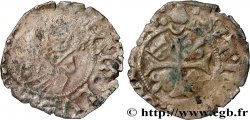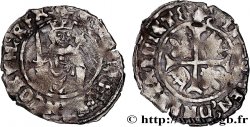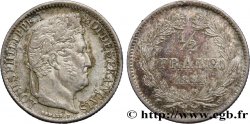E-auction 603-573073 - bry_569898 - CHARLES VIII Petit karolus n.d. Châlons-en-Champagne
You must signin and be an approved bidder to bid, LOGIN TO BID. Accounts are subject to approval and the approval process takes place within 48 hours. Do not wait until the day a sale closes to register. Clicking on « bid » constitutes acceptance of the terms of use of cgb.fr private e-auctions.
Bids must be placed in whole Euro amounts only. The sale will start closing at the time stated on the item description; any bids received at the site after the closing time will not be executed. Transmission times may vary and bids could be rejected if you wait until the last second. For further information ckeck the E-auctions F.A.Q.
NO BUYER'S FEE.
NO BUYER'S FEE.
| Estimate : | 350 € |
| Price : | 105 € |
| Maximum bid : | 165 € |
| End of the sale : | 04 November 2024 15:15:20 |
| bidders : | 8 bidders |
Type : Petit karolus
Date: 11/09/1488
Date: n.d.
Mint name / Town : Châlons-en-Champagne
Metal : billon
Millesimal fineness : 319 ‰
Diameter : 19 mm
Orientation dies : 5 h.
Weight : 0,98 g.
Rarity : R3
Coments on the condition:
Ce petit karolus est frappé sur un flan large, irrégulier et présentant une trace de pliure. Exemplaire recouvert d’une patine grise. Petite fente à 11 h. 30 au droit
Obverse
Obverse legend : + KAROLVS[: FRAN]CORVM: [REX].
Obverse description : Grand K oncial couronné, accosté de deux lis.
Obverse translation : (Charles, roi des Francs).
Reverse
Reverse legend : + SIT: NOMEN: DNI: BEN[E]DICTVM.
Reverse description : Croix couronnée, cantonnée de quatre lis.
Reverse translation : (Béni soit le nom du seigneur).
Commentary
Les petits Karolus sont rares et se rencontrent souvent dans des états de conservation médiocres. Monnaie excessivement rare pour l’atelier de Châlons-en-Champagne.
Small Karolus coins are rare and often found in poor conditions. An extremely rare coin for the Châlons-en-Champagne mint.
Small Karolus coins are rare and often found in poor conditions. An extremely rare coin for the Châlons-en-Champagne mint.








 Report a mistake
Report a mistake Print the page
Print the page Share my selection
Share my selection Ask a question
Ask a question Consign / sell
Consign / sell
 Full data
Full data















